When running a local service business, social advertising across Facebook and Instagram can be a powerful tool if executed correctly to kick start your business. While “organic” social still provides value, the results are unpredictable. It can be difficult to anticipate if your content is reaching your actual target market, and engagement rarely correlates with real business goals, such as brand awareness, website traffic, and lead generation. “Organic social” is simply all social efforts that do not involve paid promotion. By pairing a solid organic social content strategy with a full-funnel social advertising strategy, you will gain much greater value and be able to tie efforts to actual ROI. The two should work in synchronicity with one another. Also, your efforts will be far more effective when using paid media because it gives you the ability to reach a broader, yet more targeted, audience and have higher predictability and accuracy than organic content alone.
By pairing a solid organic social content strategy with a full-funnel social advertising strategy, you will gain much greater value and be able to tie efforts to actual ROI.
Like any other form of marketing, social advertising has an order of operations. If you neglect this order you will not only waste your budget but will also miss out on the true value that social advertising has to offer to your business. For example, if you post an ad for lead generation without investing any time into guiding your target audience through a social sales funnel, you will fail to reach your goals. The digital customer journey is more of a cycle than a funnel, but to keep it easy we will work with a simple, well-known funnel format: awareness, consideration, and conversion.
Getting Started
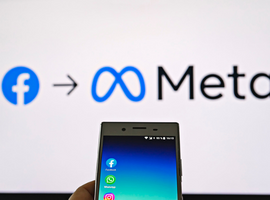
Before diving into any advertising on Facebook and Instagram, there are some preliminary steps to take.
1. Set Up Your Accounts
To get started using Facebook and Instagram marketing, if you haven’t already, create a business page on Facebook. An Instagram page for your business is not necessary to advertise on Instagram. However, it is the fastest-growing platform, so it is highly recommended to have an active Instagram account for your business.
2. Create a Business Manager
As part of your Facebook and Instagram advertising strategy, Create a Business Manager account for your Facebook and Instagram pages. This is where you will be able to manage your page, ad accounts, and analytics. From here you will create an ad account, set up a billing method, and find your tracking pixel to install. This is a tracking code that lives on your website to track traffic, record user analytics, be used for remarketing, exclude certain users (such as people who have already requested an appointment), and aid with creating future strategies using data to drive your decisions.
3. Set Up Tracking
Install the Facebook Pixel to your website. Put this code on every single page of your website and add a lead event tracking code to all of your thank you pages, as well as any other relevant events. If you work with a website provider or a pay-per-click (PPC) specialist, either of them can easily set this up for you. This step is essential!
Learn how to get set up on Business Manager here.
4. Set Your Goals
Determine what you would like your overall goal to be. What do you want to achieve from your social advertising? For many, it will likely be to acquire new customers – but there are many benefits of social advertising, such as: to drive registrations for events, promote the release of a new service or product, or get more users to download an app – just to name a few. But, for most, it is to grow their business and acquire new customers.
Once you are set up you can jump into the execution of your social media strategy for Facebook and Instagram. Remember, the Facebook ads manager controls Instagram ads as well.
Build Your Local Brand Awareness

Brand awareness can often be overlooked in social advertising because in and of itself, it cannot easily be correlated with revenue. However, it is probably the most important part of your advertising strategy. Everyone wants quality leads, but how can a business expect someone to give away their personal information, or to set up a consultation when they have no idea who you are? You may have been in business for 35 years in the same area, but unless you are in a small town where no one leaves and everyone knows each other, chances are new people are moving in and out of town all the time. Local brand awareness ads on social media are a perfect solution to attract homeowners to your business.
Everyone wants quality leads, but how can a business expect someone to give away their personal information when they have no idea who you are?
There are two objectives available to reach the ideal social users in your geographical area: Brand Awareness and Reach. The difference is simple – “reach” will push your content out to as many people as possible within your targeting parameters, and “brand awareness” is telling the algorithm that you not only want to reach as many people as possible in your geo, but also those who are most likely to be interested in your services. If you are an established, well-known brand, reach could be an option for getting the word out about new service offerings or promotions. However, if you are a newer establishment, brand awareness will be the best use of your budget to ensure you are reaching a more niche audience. I prefer brand awareness because I live by the rule of quality > quantity.
After you set your objective, select your budget. You can either do a lifetime budget or a daily one. I recommend daily because it will spend evenly throughout the campaign whereas lifetime can spend slowly and rev up at the end of a campaign to spend the remaining budget quickly. With daily, you can still set a limit so you don’t overspend. The budget is totally up to your business needs and it depends on how aggressive you want to be. If you are in a highly-populated area, I would recommend starting at a minimum of $500 a month and increasing as you see results. Areas with less population can get away with spending less.
Reaching Your Target Audience

Now that you have an objective for the ads you want to run and a budget in place, who will see them? There are many ways to target using ads manager, with the primary method being core targeting – or, using Facebook’s targeting capabilities that are built right into the platform. These include geographical targeting using a radius of up to 50 miles or zip codes (I recommend using zip codes if you live near water or if you want to leave out a certain area), age, gender, languages, and detailed targeting. Within the detailed targeting section, there are factors such as interests, specific demographics, and online behaviors.
If you have not already, creating personas for your target market is very helpful. You probably know who your ideal clientele is, but having personas written down on paper can assist you when creating your first core targeting audiences. To keep it simple when kicking off your social advertising, stick to 3 personas maximum.
A simple example would be:
- Kate, 43 years old, married
- Lives in Holmdel, NJ
- Works full time as a nurse practitioner
- Mother to one young child
- Just moved to the area within the past 6 months from NYC and it is her first time owning a home. She is quickly realizing all of the work that comes with homeownership. Kate needs to find multiple home service companies, as her schedule is busy between being a full-time nurse practitioner, a mom, and a wife. When she is not working, she would rather be spending time with family than worrying about lawn care, cleaning, pest control, HVAC, and other issues that arise.
- An ideal experience for Kate would be to find local service professionals that are reliable, convenient, reasonably priced, honest, and who will set up recurring services if needed, as she is a very scheduled person.
A good rule of thumb is to have the dial that shows you the audience size to be right in the middle – you never want to be too narrow or too broad. Before I added the “must also match” category, my audience was over 770,000, so narrowing it down is helpful as well. Of course, this is just one persona example, but the idea is to create a few personas and set targeting around people who fit the mold. Also, you should add interests that are specific to your services. The best way to learn is to make some mock audiences and play around with targeting.
Creating Thumb-Stopping Content
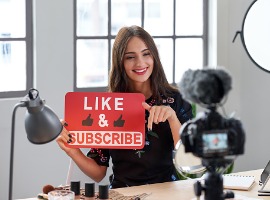
Now, the most important part – your content! We can write a book on content, and there are many, such as one of my personal favorites, The Content Code. There are many types of content that you can use, but if you are brand new to social advertising, don’t overwhelm yourself. Stick to thumb-stopping graphics, photos (preferably taken with DSLR camera or other professional devices), and videos. The most important thing to remember is to be engaging, as boring content will lose every single bid in social advertising. People are not on social to track down your business, you are on social to track down your prospects. They are standing in line, sitting on the train, or killing time on their lunch break just scrolling through their Instagram feed and stories. How can you grab their attention with an Instagram post?
People are not on social to track down your business, you are on social to track down your prospects.
Facebook has a great tool that shows the best performing ads of the month if you need inspiration that you can find here. While many are not specifically geared toward field services, the tool can spark ideas for formatting and context.
The context of the content is important for each stage. Right now, you are still branding. The social community has no idea who you are. What is the story you want to tell them? Using the carousel format or video content is a great way to tell your story on social – just keep in mind that if you decide to use a video it should be less than 30 seconds, and try to steer clear of using a TV commercial. Think more authentic – and less sales-oriented. The goal here is simply to introduce your business to the local community. The first few seconds are critical – be sure to convey your message in a quick, easy to understand way.
The metrics you want to pay attention to for brand awareness are reach and estimated ad recall (an estimate of how many users will remember seeing your ad if asked within 2 days.) I recommend running a branding ad for at least one month when you are first starting. This gives a chance for your brand to resonate with the audiences you are split testing.
Getting Your Business Into The Local Homeowner’s Consideration

After your business has gained some local awareness on social through your Facebook marketing strategy, you can move to the next stage, consideration. Most people will compare a few companies before choosing one. This stage can also be treated as the research stage. There are multiple objectives in the consideration bucket, but for home service businesses I recommend choosing Traffic. If you do not have an optimal website, you can choose Video Views, Engagement, or Messages. But, ideally, we want users to click through to learn more about your services or engage with your brand in some way that can be retargeted.
After testing multiple audiences, use the combinations that performed best (highest reach and estimated ad recall). You can also begin to retarget users in this stage. Here are some retargeting options that are available to you:
- Users who have engaged with your brand’s pages.
- Customer and prospect lists from CRM data.
- Website Traffic
- Offline activity, such as people who interacted on the job or over the phone.
- Users who have watched a video that you posted (as an ad or organically.)
- Users who responded to an event you promoted (“going” or “interested”).
- Users who filled out a lead form.
Many of these you will use in the next stage, in this stage primarily focus on the first 2 bullets. You can also create lookalike audiences from any of these options. Lookalike audiences typically perform very well. They basically take users that are interacting with your brand and find additional users with similar attributes. The Campaign Budget Optimization feature will automatically allocate the budget to the audience/creative combo that is performing best, so there is no need to manually optimize if this is set up correctly.
As discussed, I recommend the traffic objective, so the pixel code can begin to collect quality traffic of users who are considering your services to then retarget them in the next stage. However, to get users to click through you need to have content that will encourage them to do so. You can use the same or similar content that you used in the branding stage, but switch up your copy to include a strong call to action. If you have any educational blogs, customer testimonials, or case studies, this is a good place to use them. Here are some examples of content that would work well in this stage:
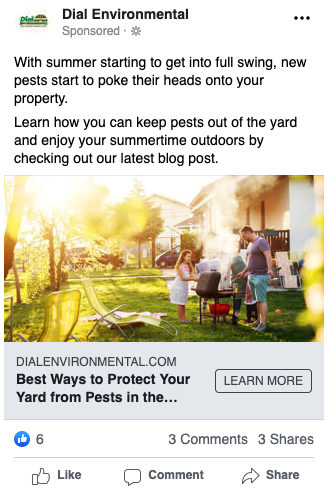

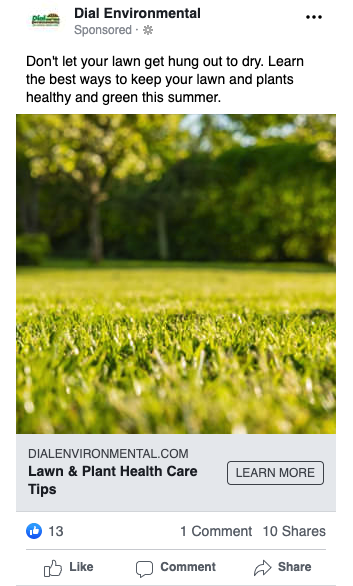
Now that your target audience knows who you are and what your story is, the goal of your content will be to show your value and highlight differentiators compared to local competitors. Let these ads run on an ongoing basis. You should run these campaigns alongside your branding campaign to continuously build awareness with new prospects. As I mentioned earlier, the “funnel” is more of a cycle when you think about it because it never ends.
The goal of your content will be to show your value and highlight differentiators compared to local competitors.
Turn Local Social Users Into Customers

With great creative content, the correct targeting, and a decent budget, your brand awareness, and web traffic will begin to climb. This is the time to hit a select audience with a promotion, such as a new client special. Use the custom audience feature to retarget users.
Best Practices for Retargeting
- Retarget all users who have visited your website. If there are pages that may indicate more interest than others (i.e. a list of services offered or testimonials) you can specifically select users who clicked through to this page.
- When retargeting users who viewed a video, only retarget those who watched 100% – this shows higher interest and engagement.
- Retarget prospects in your CRM, as well as customers who you have not seen in a predetermined time period. For example, customers who were very active last season but have not reached out this season.
- You can also exclude certain users from seeing these ads, such as current customers, or those who have already landed on a thank you page in the past 30-180 days, indicating that they have already contacted your business.
From here, there are two ideal objectives to choose, Lead Generation or Conversions. Lead generation is technically in the consideration bucket, but in a products or service business, this would be the last touch on social, making it the conversion in this case. The actual conversion, aka becoming a customer, will happen offline. Unless your business does in fact schedule consultations online, in which case you will use the Conversions objective.
Custom Conversions
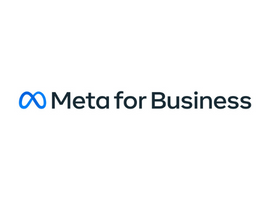
You can create a custom conversion in the Business Manager. Use the URL of whichever page a user will land on after filling out a contact form or scheduling a consultation. That will be your event and you will link this to your ad so each time a person clicks your ad and completes this event, it will count as a conversion. Be sure that your landing page is the page with the action that you want the user to take. Over time (after about 50 conversions) the algorithm will take over with machine learning and will perform optimally (targeting those who are likely to complete this action) and you can open this up to users that are not only in the retargeting bucket. This rule applies for Lead Generation as well.
When choosing the Lead Generation objective, you will essentially be doing everything the same except that you will not create a custom conversion to send users to. When users click your ad a form will open up and autofill their information. You can then download your leads into a CSV file, or connect your CRM for seamless integration. This is a great option if your website or landing page is not optimized for lead generation or scheduling.
Keep these campaigns running on an ongoing basis as well to continuously retarget users who are landing on your website from your consideration stage (a cycle.)
Social Advertising Tips
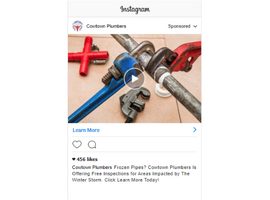
- There are many placements that ads run on, on and off Facebook and Instagram. Each is unique and your ads will look different on each placement. Be sure in the ad creative section to toggle over to each placement and adjust if needed (there is an edit option for each.) In the ad set section (where you set your targeting) you can choose not to place ads on certain placements or to let the algorithm optimize and place them where they are performing best.
- Creatives should have little to no text. No text is best. Graphics or photos with too much text are not visually appealing and will be disapproved. The rule of thumb is 20% or less.
- If you have a video ad, the text rule applies only to the thumbnail. However, when using video a few rules apply here as well.
- Keep your video under 30 seconds, and 15 seconds if you want to use the instream placement (similar to YouTube pre-roll.) It is essential to get your message across as quickly as possible.
- Think mobile-first design. How will this video look on a phone? In stories? Vertical filming is recommended if you plan on using stories.
- Social video content should be able to be understood with sound off. Many users watch videos on mute, so be sure to have subtitles if necessary.
- Always be A/B testing your copy, headlines, and creative for optimal results.
- If using any links, always use UTM tags so you can accurately track and attribute results in google analytics. Create a UTM tag here.
- Ads Manager has a learning phase. The first week may not get amazing results immediately. You must give it time to optimize and learn your targeting. The longer an ad is running without changes, the better it will perform. Each time you change something, even if it is one word, your ad will get thrown back into a review and start from the beginning. Try your best not to turn ads on and off and make too many changes. That being said, you can also experience ad fatigue. When you start seeing results decrease this may be a sign that you need a fresh creative or target audience. This period can vary for each business, but I like to work in quarters and refresh my ads every 12 weeks.
- Facebook has policies in place to protect its users. Familiarize yourself with them to understand what type of content is prohibited.
You are ready to start harnessing the power of social media advertising for your field service business! If you would like to learn more about organic strategy and engagement, check out my previous blog. If this sounds like a lot of work, that’s because it is! For the best Facebook ad strategy results, and Instagram, Facebook advertising should be just one part of an overall digital marketing strategy. If you would like to work with professionals who specialize in digital marketing for the field service industry, contact the experts at our WorkWave Agency!




